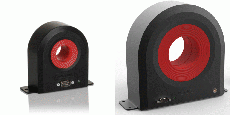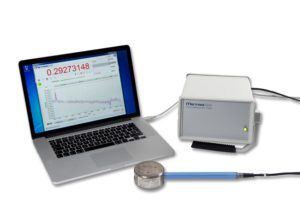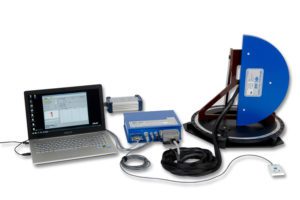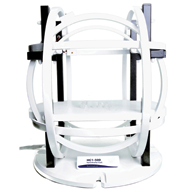Magnetic Resonance Imaging
Magnetic Resonance Imaging uses Nuclear Magnetic Resonance to generate high resolution images over extremities or whole body. 1.5T whole body magnets now make up most of commercial but 3T and 7T magnets are increasingly used for application requiring high contract such as brain imaging for thing such as Alzheimer’s research.
Gradient Amplifier Current Measurement
MRI imaging systems use X, Y and Z gradient coils to generate the gradient field for imaging. The gradient amplifiers used to drive the gradient coils must have fast pulse response and very high resolution.

Danisense Zero-Flux Current Transducers are used within gradient amplifies for precise, repeatable and stable control of the output current.
MRI Magnet R&D and Manufacturing Tests
Whether developing new MRI magnets or testing on the manufacturing floor, very high-resolution measurements of B0 field are required during ramp up, magnet shimming, and decay measurements.

PT 2026 single-point NMR probes are used to measure fields during ramp-up and for decay measurements. The PT 2026 can measure from 0.19T to >20T with a precision of <10ppb, depending on probe selection.

MFC3045 Magnetic Field Camera is used for rapid magnet shimming measurements. An MFC consists of an array of NMR Probes, typically 24 or 32 points that can measure all 32 points in approximately 2 seconds. For example, by using a semi-circular Array with 32 field points rotated about the field axis in 32 angular steps, a 1024 point spherical map can be generated in about two minutes.

Next-generation MFC2046 Magnetic Field Camera can combine a single wide-band probe, like the PT 2026 probe, In the center of the array, allowing all MRI B0 measurements (ramp, decay and shimming) to be made with a single instrument.
MRI Site Survey/NMR Site Survey
Both these instruments use magnetic field to image/analyse people/materials. For optimum performance, they must be installed in an environment with limited magnetic field variations or ground vibrations. Most manufacturer have set thresholds for a suitable site.

Spectramag-6 combined with the Mag-13MS or Mag690 will be the most suitable to perform the magnetic surveys. The use of a compatible accelerometer with the Spectramag-6 also allow for vibration measurements.
MRI and Low field MRI Suite Active Cancellation
Upon completion of the site survey, the degree of shielding required can be assessed. The choice available depend on the frequencies of the field to attenuate and the level of attenuation required, with passive magnetic shielding, RF shielding or active magnetic cancellation all possible options.

In the latter case, a fluxgate magnetometer (Mag-13MS or Mag-03MCT) is located within the cancellation coils, as close to the MRI as possible (without saturating the sensor). It will sense unwanted field variations with the signal going to a cancellation control system which will then alter the current inside the cancellation coils.
EMC/EM Fields Safety Measurements
EMC regulations in place dictates the permissible magnetic field levels tolerated over a given frequency range. The guidelines ensure that people are not exposed to field levels at levels which can be considered unsafe. Common standards include 5-gauss line and 100-gauss line measurements.
Suitable instruments include:
- THM1176 for DC and to 1kHz.
- For higher resolution measurements, the Spectramag-6 combined with the Mag690-1000 or Mag-13MS1000 can be used.
Biomagnetism
Magnetic fields are both generated and interact with the animal kingdom. The interactions can be positive (birds using field to navigate) or may have negative impacts (possible health effect of some AC magnetic fields). Field generated, for example by the human heart can be of assistance in diagnosis.

For field measurements, including recent work on MCG (Magneto-cardiogram) and low frequency AC field, the Mag-13 or Mag639 would be the most suitable.
For field generation, 3-axis Helmholtz Coil Systems would allow to subject a sample to a controlled magnetic field.
